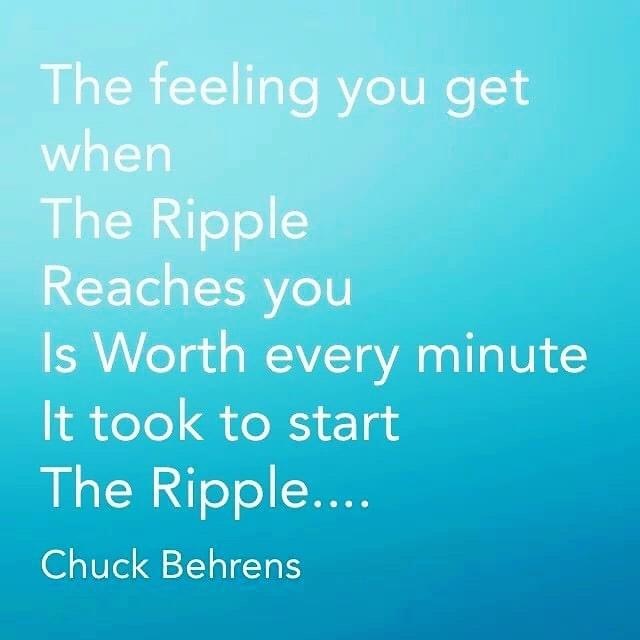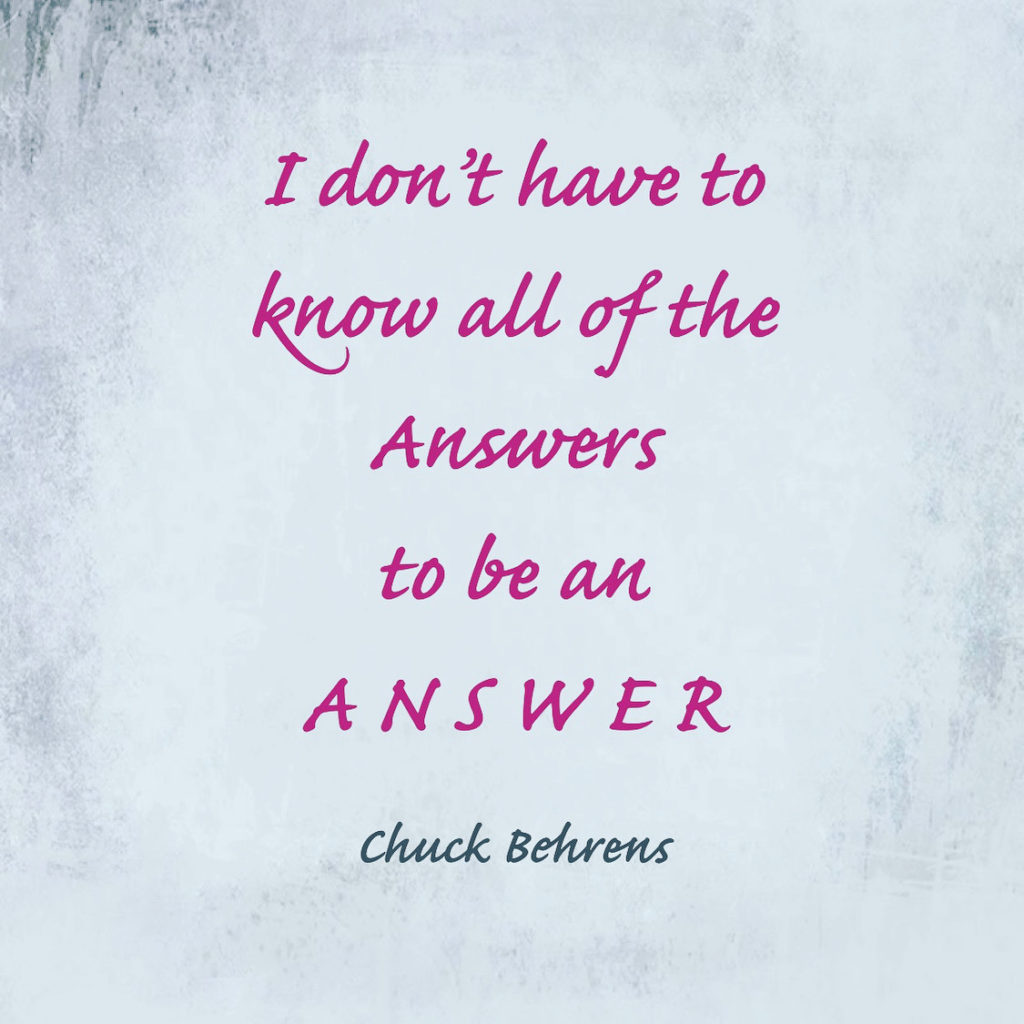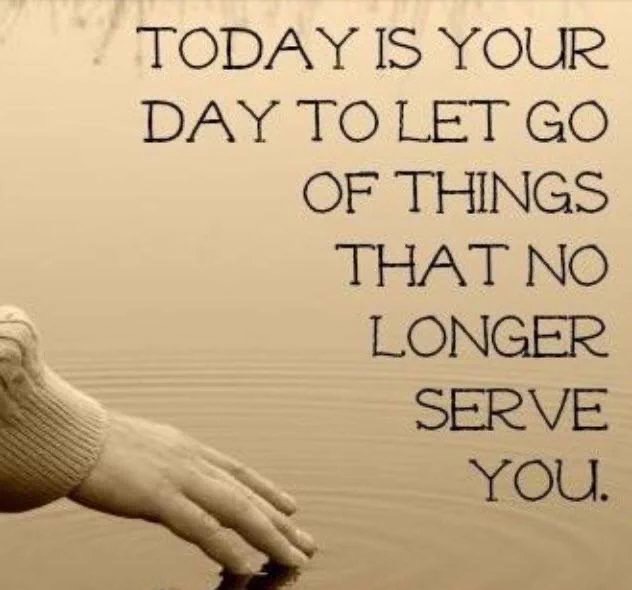If our Lives are like Books
We no doubt have many
LINES
PARAGRAPHS
PAGES
CHAPTERS
LARGE SECTIONS
we would rip out
So others would never see them
and we just might be able to forget them
b u t
if we could just learn from our mistakes
(especially the ones we make repeatedly)
we just might find
that we have no regrets
but some
MONUMENTAL MEMORIES. . .

GETTING YOUR COURAGE ON
We have all kinds or reasons
N O T
to have courage
and one of them is not having all of the
A N S W E R S
when answers themselves
can only be found by
L I V I N G
out our scariest
Q U E S T I O N S
so in the middle of all of this,
we get a little peek from
Amy L. Eva, Ph.D Ph.D., who is the associate education director at the Greater Good Science Center. She writes for the center’s online magazine, facilitates the Summer Institute for Educators, and consults on the development of GGSC education resources. With over 25 years in classrooms, she is a teacher at heart. She is fascinated by neuroscience, the psychology of learning, and adolescent development and has spent the last 12 years as a teacher educator. She advocates for Six Ways to Find Your Courage During Challenging Times
Courage doesn’t have to look dramatic or fearless.
Sometimes it looks more like quiet perseverance.
“We teach who we are,” says educational philosopher Parker Palmer.
Early in Amy’s teaching career, she participated in a series of retreats led by the Center for Courage and Renewal, inspired by Palmer’s book The Courage to Teach. Palmer reminds us that our sense of self plays out in our work every day—and living with courage and integrity means finding balance and alignment between our inner and outer selves. In other words, our identities, values, and beliefs inform the selves we bring to others.

But how do we find the courage to stand up for our coworkers, students, neighbors, family and friends, and ourselves amid exhausting and unprecedented challenges?
Understandably, there are days when you feel emotionally weary, inept, and cynical—all characteristics of burnout. However, I’m finding that the science of courage offers a psychological lifeline, helping us to clarify what really matters so that we can find a steadier, values-based resolve—and even inspire it in others. I dove into the courage research with teachers in mind, but these tips are for everyone.
Fortunately, courage comes in many forms. Although definitions range, researchers tend to agree that it features three primary components: a risk, an intention, and a goal that may benefit others. In a classic example, a student defends a peer who is being verbally assaulted by a bully, by interrupting the bully and telling them to stop. This purposeful act may come at a cost—perhaps socially or physically.
But courage doesn’t have to look dramatic or fearless. We express it in both bold and quiet ways. In fact, “general courage,” the confident or seemingly brazen actions perceived by others, differs from “personal courage,” those actions that are courageous in the minds of the actors themselves. It all depends on how you view the challenge in front of you and the fears associated with performing a particular behavior. In other words, these days, some of us may need significant “personal courage” to get out of bed and face the day on behalf of those students we value and care about.
Why is just showing up courageous? Daily stressors can pile up, leading to emotional exhaustion, a sense of detachment from your work, and the feeling that you simply aren’t as capable as you thought you were—and if you don’t feel capable, you may not feel particularly confident. Yet courage is also associated with other positive character strengths, like persistence and integrity.
The good news is that there are many ways to tap into our capacity for courage, whether we are adults or students. Here are six.
1. See yourself as courageous
First, if we describe ourselves as “courageous,” we are more likely to act courageously. In other words, if I tell myself that I’m a courageous person as I park in the school parking lot and walk into my school, it may actually give me a psychological boost and inspire me to meet the day with greater self-assurance.
Alternatively, we can take time to note and label all the courageous actions we have already taken in our lives. For example, when you consider how your childhood struggles inform your current relationships with coworkers or students, or how you made it through college as a single mom, or how you’ve learned to cope with a chronic health issue, you may be more likely to experience positive emotions while reconnecting with personal values and beliefs that can inspire future courageous behaviors.
Consider conducting an inventory of past actions with your students or colleagues so that you can identify and celebrate individual acts of courage together. Then, discuss how those actions influence who you are now and who you want to be.
2. Get comfortable with “mistakes”
We can recognize and celebrate courage with others, but it can also be a very internal, day-to-day experience. One of the most common ways we practice courage at work is in our pursuit of learning and personal growth. Research tells us that fear of failure can negatively correlate with courage, but what if it’s OK to make mistakes—and they are even welcomed learning tools?
Studies indicate that students may benefit from making mistakes (and correcting them) rather than avoiding them at all costs. And when researchers reviewed 38 studies of resilience in response to failure, errors, or mistakes, they found that more resilient individuals had lower levels of perfectionism and a more positive way of explaining past events: “I haven’t solved this long division problem yet, but I’ll try another strategy next.”
Another way to address fear of failure is through a simple practice you can share with your students or colleagues called “Crumpled Reminder,” where you write about a recent mistake you made, crumple up a paper representing your feelings about that mistake, and then discuss the ways mistakes strengthen brain activity and help us to learn and grow.
Rather than fearing looming “failures,” seeing daily missteps as opportunities for learning frees all of us to appreciate learning for what it is—a process rather than a performance.
3. Keep trying
Courage at work also requires perseverance. As our fears lessen, we are more likely to persist in learning—to keep trying despite the obstacles ahead of us. And perseverance (or persistence), as a character strength, can also be modeled, observed, and developed. In fact, when adults model persistence in working toward a goal, infants as young as 15 months tend to mimic that behavior.
As teachers, we have a lot of power to influence our students’ efforts by sharing our own vulnerabilities while we read a challenging text, our own self-conscious emotions as we outline a timed essay, our stops and starts while solving a word problem, and our commitment to keep going.
And research suggests that teachers’ growth mindsets, or belief that intelligence grows and changes with effort, can be linked to the development of students’ growth mindsets. This more positive, flexible mindset can improve students’ performance at school, boost their well-being and social competence, and even promote kind, helpful, and prosocial actions. All these benefits may bolster our capacity for courageous actions, too.
4. Look for the heroes
Of course, if we are feeling apathetic, anxious, or fearful about stepping up and doing that next best thing at school or in life, it can be helpful to draw inspiration from others—whether near or far, real or fictional.
According to research, the individuals we admire may represent some aspect of our ideal selves as they demonstrate moral courage through difficult times and a desire to do good in the world. They can also inspire us to live more meaningful lives. Studies suggest that seeing images of heroes may move us to sense greater meaning in our lives—and even increase our drive to help others.
Basic social cognitive theory tells us that we are motivated through “vicarious experiences”—as we witness others’ actions. In fact, when adults observe courageous behaviors in their workplaces, like a teacher standing up for a group of students or a colleague advocating for an important policy, they are more likely to see the potential for organizational change and feel inspired to act courageously themselves.
Our students can benefit from models of courage, too. In the “Who Are Your Heroes?” lesson from Giraffe Heroes Project, students listen to and present hero stories, while exploring the risks and benefits of courageous acts. Stories like these can communicate shared values, make us more empathic, and may encourage us to help others.
5. Clarify your values
You may recognize heroism or courage in others, but sometimes struggle to see it in yourself. If so, it may be helpful to ask yourself a few key questions:
- What do I value in myself?
- What do I “stand for”?
- What is important to me?
- What are some of my successes and accomplishments?
When researchers measured teachers’ responses to prompts like these, they found that teachers’ anxiety immediately decreased—and they experienced more positive emotions over time when compared to a control group. Teachers’ values drive their goals and behaviors at school, while supporting their well-being and a sense of self-efficacy at work. If we feel clear and capable, we may also feel more courageous.
Philosophers consider courage to be a foundational virtue because it guides us to act on behalf of other virtues or values. In fact, our convictions, values, sense of integrity, honor, and loyalty can all influenceour courageous actions. When we experience a threat to our moral code, we are likely to act in a way that upholds our beliefs and values. And the more powerful the belief, the more likely you will not be influenced or swayed by those around you.
You and your students can clarify your values and explore your character strengths through a range of simple practices for both adults and students, like Discovering Your Strengths and Talents, Eight Inner Strengths for Leaders, and Reminders that Encourage Moral Character Strengths.
6. Become part of a social force for courage
Finally, we can act on our values in community. After more than a year of isolation from each other—and the prospect of ongoing public health, environmental, and sociocultural crises—we are finding courage again in groups.
Visit Greater Good in Education for more information, tips, and practices to support teacher and student well-being. To dive deeper into the research behind these practices and strategies, register for one of our online courses for educators.
Teachers and students are participating in social and emotional communities of practice, circles of courage, and other “circles” practices to nurture a sense of belonging, find emotional support, and engage in collective action. Studies indicate that social groups like these promote interdependence, social identity, and cohesion and influence courageous behavior, too.
And one of the most empowering things we can do for our students right now is to support them in being courageous community problem solvers, too.
Tribes Learning Communities curricula focus on active learning and community building among adults and students to reduce violence and increase kindness. For example, in their lesson “Put Down the Put-Downs,” students consider how hurtful name-calling really feels and brainstorm ways to end the problem in their classrooms and school. In this case, perspective taking and empathic responses can lead to more courageous and impassioned student action, cultivating a positive school and classroom climates where everyone is honored and valued.
Further, in the lesson “It’s Up to Us to Stick Our Necks Out,” students share stories about everyday heroes drawn from a free story bank, and then learn to “Be the Story” by selecting, planning, and enacting a service learning project to address a community challenge (such as homelessness, clean air or water, or a need for increased literacy). As we act on our values together, we may feel a greater sense of agency in a world that feels topsy-turvy right now.
During those dark, winter mornings when you really don’t want to crawl out of bed and face the day, remember that courage can also be a very private, personal act. There will always be risks and challenges to face, but what really matters most—in your gut? Is it love, learning, curiosity, compassion, hope? How do these values inform who you are and how you show up in the world?
These are the key questions that can help us to frame our truest intentions—even on our most difficult days.
C O U R A G E
is the greatest
ERASER
for Fear
and it’s easily applied
BY JUST SHOWING UP
and
GETTING YOUR COURAGE ON. . .
It’s not always easy
but
ALL-WAYS
Worth It
IT’S A GREAT DAY TO MAKE A MISTAKE
I bet you didn’t wake up this morning and shouted out loud
even before you went to the bathroom:
IT’S A GREAT DAY TO MAKE A MISTAKE
IT’S A GREAT DAY TO ROYALLY SCREW UP
IT’S A GREAT DAY TO BOTCH PLAN A
IT’S A GREAT DAY TO BECOME AN ABSOLUTE FOOL
or
DID YOU. . .
There are some things in life that make the difference between happiness and unhappiness. . .
They make the difference between a society of fulfilled
and engaged people. . .
And mindless robots who are afraid to be different. . .
Who suppress their creativity. . .
Who forget their potential. . .
Who ask all the wrong questions
or worse
Who don’t ask any questions at all. . .
Who don’t understand why the world
doesn’t operate by the rules
it did when they were children. . .
YOUR MISSION
should you choose to accept it
is simply this:
LIVE PERFECTLY IMPERFECTLY
with making mistakes
not a mistake
but moments of
majestic manifestations magnificences
(it’ll end hitting the REWIND BUTTON and living in the MOMENTS)
The Funeral That Wasn’t, WAS
It happens you know?
We die many Deaths before the one that actually stops our hearts,
silences our minds and completes un-whispered thoughts
with the promise of not one more inhaled breath. . .
W E D I E. . .
I did just a few hours ago. . .
I was actually working on this post
(WELL, ANOTHER ONE BEFORE THE PHONE CALL)
when my Cell phone rang. . .
I noticed it was the number of a Funeral Home. . .
(Some have me on Speed Dial)
The words he said
are words that literally make me wake up in the middle of the night in a cold sweat?
“WHERE ARE YOU AT?”
I was planning to do a memorial service for a family on FRIDAY NIGHT
and they and the Funeral Director
decided to change it to a night earlier—-
WITHOUT TELLING ME!
Let’s get something straight,
right away—a Confession of sorts—
The Writer and the Reader of this Blog
ARE NOT PERFECT. . .
THEY make Mistakes—-
lots of them!
With my heart still pounding
(for something that wasn’t my fault this time)
just a mere 15 minutes before the service was to begin,
I told him I could throw my suit on and get to his place within a half-an-hour. . .
(I was able to do it in 27 minutes)
When I arrived,
I met her husband of 57 years
and her children
and after apologizing for me being late,
we began the service. . .
My heart had been successfully resuscitated. . .
It beats best when I speak. . .
when I do Services. . .
under pressure. . .
I can’t rightly explain
H O W it’s a Gift;
I just know T H A T it’s a Gift
and it’s when I absolutely feel most alive,
B U T. . .
that’s not really what this Post is about at all. . .
Sometimes the worst deaths
take place way before our hearts stop beating. . .
When we make mistakes. . .
When we don’t own mistakes. . .
When we hurt another. . .
When we’re hurt by another. . .
When prayers aren’t answered and dreams realized. . .
When disappointments taunt and unfulfilled anticipations haunt. . .
When steps have been taken but lead to seemingly nowhere. . .
When Hope is just a Window dressing for Denial. . .
When Tears are the Worst Seasoning ever tasted. . .
When Shame is Worn more often than Success. . .
When Weariness is stronger than Worthiness. . .
When___________________. . .
What’s your Greatest Fear ?
What’s the thing that makes you wake up
in the middle of the night in that Cold Sweat?
What S T O P S your Heart ?
Open Graves are always a danger for Living
U N L E S S
We intentionally bury that which has no Life, . .
NO Living in us. . .
Some things in us just need to be
G O N E !
It was S U P P O S E to be tomorrow night. . .
We have many
S U P P O S E ‘ S
in our Lives that take on Lives of their own—
EXCEPT. . .
they are not R E A L. . .
THEY only feel THAT way!
The Funeral that Wasn’t,
W A S—
I sat down beside the Widower after the Service
and he told me how great I was
and even after I apologized again for not being able to say what he really needed to hear,
he assured me that my words
were exactly what he needed
and couldn’t believe having not met him or his deceased wife of 57 years
how it FELT to him that I did. . .
I thanked him for Showing me
WHAT WORKS. . .
WHAT CAN’T BE BURIED. . .
Who. . .
who could imagine that Flowers can grow
without being planting first. . . ?
One’s who see Open Graves
not as a Rut or a Tomb,
but just a another beautiful place
to grow Flowers and Plants. . .
(And Actually Use them as Such)
Chasing Thrown Rocks
Go ahead. . .
pick a couple of Rocks. . .
but not just ANY Rocks. . .
Pick one that represents every
T H I N G
bad you’d like to Throw Away,
get rid of,
D i s c a r d from your Life.
We all have those pages,
those paragraphs,
those Sentences in the Book of our Life
we’d love to rip out,
obliterate as if they’d never existed,
so we and no one else will ever know of them again or ever.
Well, wonder if you could throw away,
f o r e v e r ,
that Misfortune in your life. . .
would you do it?
Take a walk with me to this pile of Rocks.
Pick one that represents everything you’d like to throw away,
and keep one that represents all that is precious to you.
Walk a little further with me
and lets securely put that p r e c i o u s rock in the most safest,
securest of places on our way to pitch that nasty,
hurtful Rock.
Here, we are!
See it a nice body of water lapping at the shores before you.
Take your aim!
Now with all of your might, do it!
T H R O W I T
with all of your strength,
all of your anger,
all of your hurt,
all of your disappointment—
H E A V E I T !
W O W !
G o o d T h r o w. . .
Look at that p l u n k,
that s p l a s h,
the r i p p l e s you created. . .
but it’s G O N E . . .
G O N E F O R E V E R !
Hey
H E Y !
H E Y !
What are you doing?
Where are you going?
G E T B A C K H E R E!
What do you mean you’re going to go find your Rock?
Are you Crazy?
Ludicrous, huh?
Seriously. . .
have you ever Thrown Away Your ROCK
only to go and find it again?
On Purpose?
Pssssssssssssssssssssssst:
N o t T o d a y !
Let it Go!
Let it be Gone. . .
Forever!
It’s weighed you down too much for too long. . .
UNLESS. . .
it hasn’t yet !




